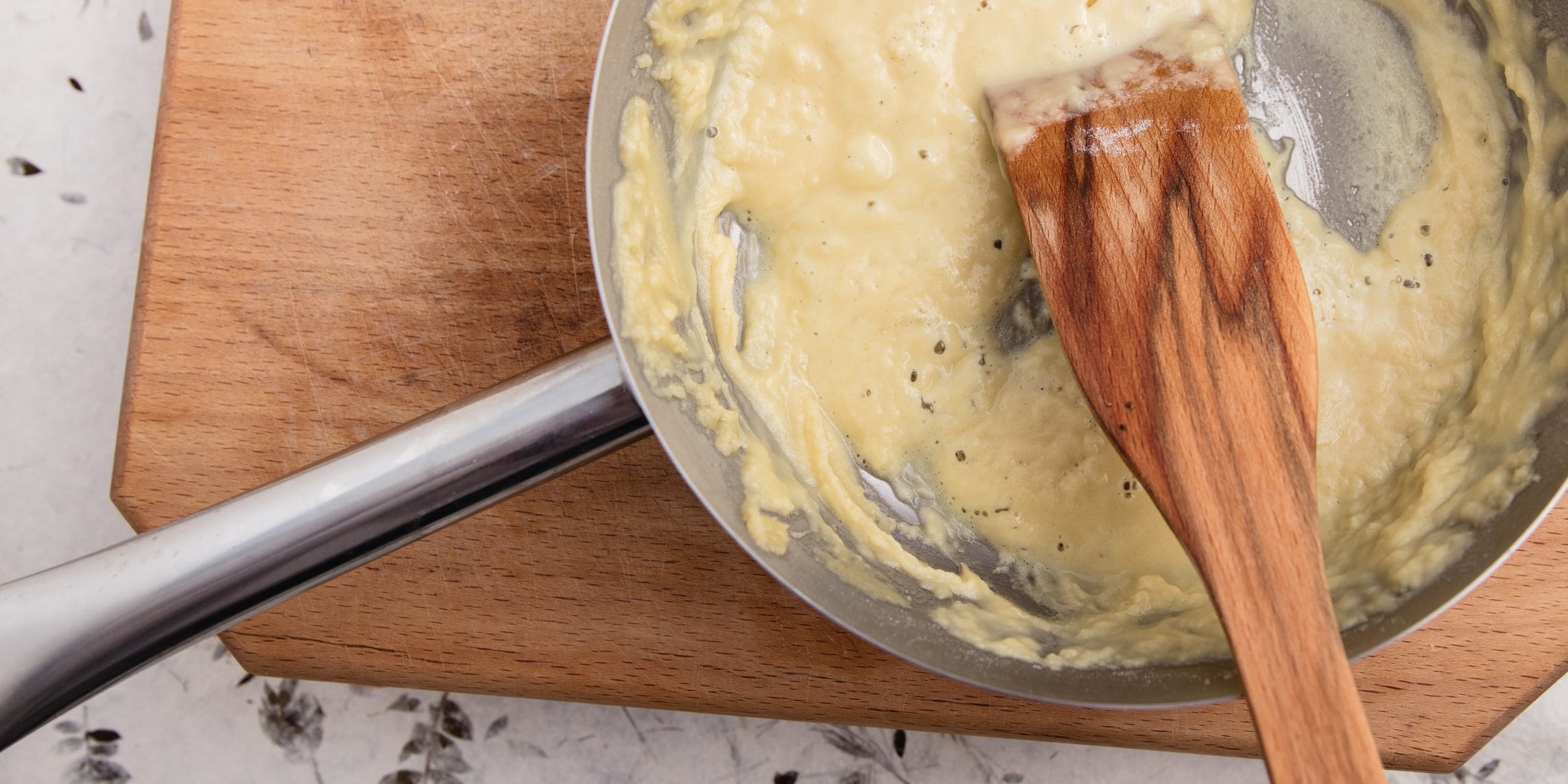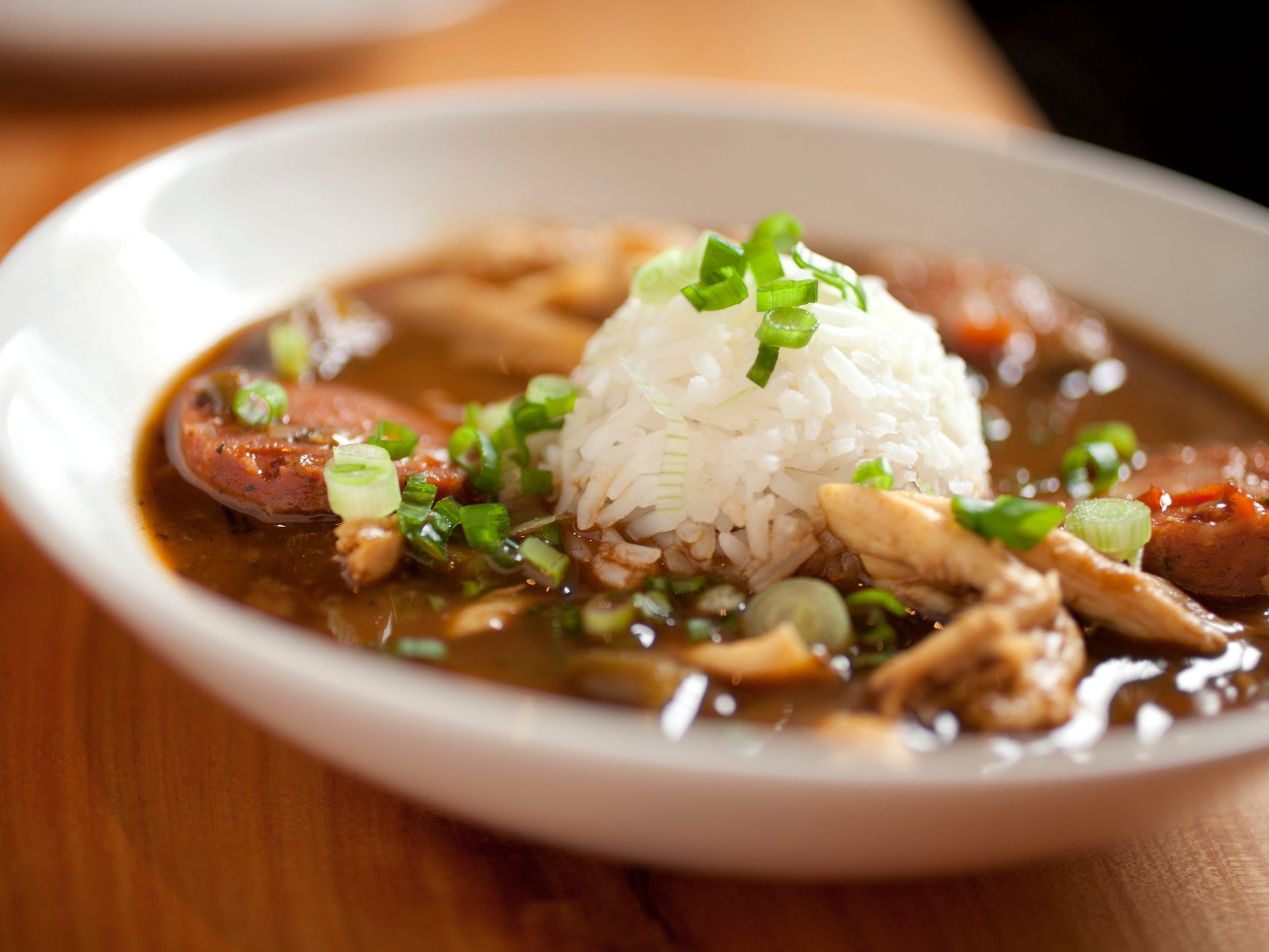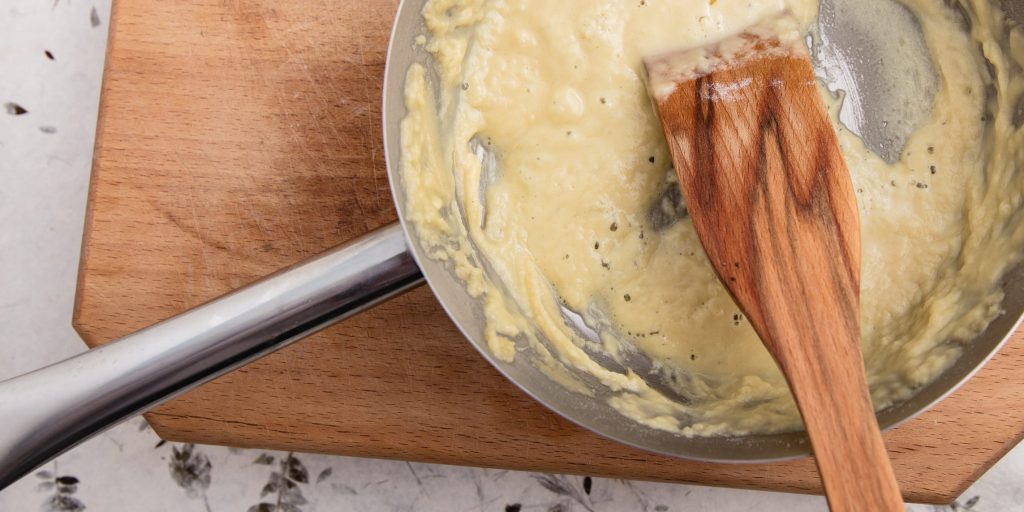
annick vanderschelden photography/Getty Images
- Roux is flour and fat cooked together until it reaches a color ranging from a pale golden to dark brown.
- Roux is often used as a thickener for sauces and soups, and as a flavor booster for stews.
- To make a proper roux, take your time, stir continuously, and keep a close eye on the color.
- Visit Insider's Home & Kitchen Reference library for more stories.
One of the most classic ways to add unforgettable texture to a soup or a sauce involves adding a roux, a French cooking staple that's made with equal parts fat and flour. Both ingredients bolster the thickness of the soup or sauce, giving it a sturdy backbone and plenty of stage presence.
In the world of classic French cooking, roux is made by whisking or stirring together equal parts flour and butter. However, fans of Cajun and Creole cuisine (like jambalaya, etouffee, and gumbo) may be more familiar with the Louisiana version of roux, which replaces the butter with oil in order to achieve a deeper color and flavor.
Whether you're using butter, oil, or even bacon grease, a strong whisking arm and plenty of patience will result in a perfect roux to serve as the base for your next hearty winter soup or finishing sauce. Brandon Boudet, New Orleans native and co-owner and executive chef of Little Dom's in Los Angeles, provides his insight on how to achieve the perfect roux for any kind of dish.
Choose your roux

Lara Hata/Getty Images
The color of a roux deepens and darkens the longer it cooks, and how you plan to use your roux will dictate the roux color you'll need. If you mainly want the roux as a sauce thickener or for gravies and cream sauces, a white or blond roux will serve that purpose best. But if you want to get some deep, intense flavor notes out of your roux, then a dark version will deliver.
Each roux type takes a certain amount of time to achieve, and each will develop varying thickening or flavoring properties as it cooks.
| Roux type | Cook time | Thickening power | Flavor | Best uses |
| White roux | 5 minutes or less | Strong | No raw flour flavor; delicate butter taste | Thickening soups and sauces like bechamel |
| Blond roux | About 5‐10 minutes | Strong | Buttery, with a hint of white bread | Thickening flavored cream and cheese sauces, and cream-based soups like chowders |
| Brown roux | About 20‐30 minutes | Moderate to Weak | Nutty, with hints of brown butter and toasted bread | Texturizing and flavoring meat gravies, adding flavor to stews and braises |
| Dark roux | About 30‐45 minutes or more | Weak | Coffee, charcoal, well-done toast | Infusing stews like gumbo and jambalaya with intense flavor |
How to store roux
If you find yourself with extra roux, Boudet says you can store it in a plastic container with a lid in the refrigerator for five to seven days. To revive your refrigerated roux, Boudet says to "bring the roux back up to temperature in a pot, then add some of the preferred heated liquid [whatever fat you used to make the roux], whisking it in slowly until it reaches the desired thickness."
Insider's takeaway
Roux isn't a difficult cooking project, but it definitely can't be rushed. There are four types of roux you can make depending on how long you cook it for. The kind you make will vary depending on if you need a thickener, or something to add flavor to a dish. As long as you've got a limber arm for stirring and a sharp eye to focus on the color of your fat-flour mixture, you'll be ready to make this classic mixture.
